#july 25 1994
Explore tagged Tumblr posts
Text


From a poster on Reddit that goes by KnowCali
Don't think they got the year right as I believe he only played at Above Brainwash in San Francisco, CA on July 25, 1994
Setlist:
Chocolate/Mojo Pin, Dream Brother, So Real, Last Goodbye, Lilac Wine, Grace, Eternal Life; Lover, You Should've Come Over, Kanga-Roo
#jeff buckley#jeffbuckley#above brainwash#san francisco#july 25 1994#july 1994#25 july 1994#bay area#live concert#live music
33 notes
·
View notes
Text
Come bother me, baby.
Based on the following post: Inspo you are the bane of young Aaron's existence - back when he was just an agent under Gideon and Rossi. A pain in his ass…so when you transfer to avoid your feelings for him, he begs you to come back. Okay listen, I know that Hotch didn’t really work under Rossi in the beginning, as Rossi had already left…but we’re all gonna pretend for the sake of this fic. Also – Haley just never existed in this, and that’s ok.
Aaron Hotchner x BAU! Fem Reader
Fluff
Word count: 4164
REQUESTS ARE OPEN - not edited - please be kind. Requests are open and feedback is welcome if it's constructive!
Warnings: My blog is 18+, minors DNI, female reader, she/her pronouns, age gap (Hotch is 28 and reader is 25), some explicit language, canon typical violence, mentions of case details, reader has experienced the loss of her parents, mention of holidays, mention of food/eating. Mention of reader being a mom, inaccurate timelines, let me know if I missed anything!!!
I do not consent to having my work translated or reposted to any other site. That being said I do not own the characters portrayed in this story.


July 1993
The year was 1993, Jason Gideon and David Rossi were just granted permission to hire two agents to expand the team. They agreed that they would each pick an agent, that way there’d be no room to argue. They interviewed a total of 17 potential candidates, 13 of those were interviewed by Rossi and the other 4 by Gideon.
Aaron Hotchner had been the 7th file in Rossi’s stack, it was an impressive resume, one that was filled with cases he’d worked as a prosecutor, and then a number of cases he’d worked as a profiler in the Seattle Field office. He now was here in Quantico, Virginia, hoping to gain a spot on the BAU. To Rossi, Aaron had stood out amongst the others, he’d sat through all 13 interviews, and nobody could match the passion for this position like Aaron had. It had been an easy choice.
You had been the 2nd file in Gedeon’s stack, and honestly he’d been let down by his first candidate…so when you walked in, more than qualified for this position, he excused the other two candidates. He didn’t feel the need to interview them, his gut told him you were the right choice. Your file had been padded with your numerous degrees varying from bachelor's degrees in psychology and criminology, to a master’s degree in forensic psychology, ending with a PhD in psychology. For the last year you’d been working in the Phoenix field office as a profiler. And while you didn’t have a ton of field experience, Gideon had been thoroughly impressed with your tenacity and overall enthusiasm for the profession.
--
September 1993
Things had started off okay…mostly. Aaron definitely treated you like you were a child, though you were only three years younger than him. While you’d spent a lot of time expanding your knowledge of this field, Aaron had worked as a prosecutor immediately after his completion of law school. You weren’t sure why he thought he was so much better than you…you were a doctor after all.
It had started in the most dismissive way possible. You’d accidentally spilled your coffee at the round table, it had spread fast, covering his copy of the latest case file. You apologized immediately, offered him your copy while you went to print another. He shook his head at you, muttering something along the lines of you being young and unprofessional.
You had thought about going to Gideon to complain but ultimately decided against it. It would only make him see you as more of a child. So, you’d worked your ass off to prove yourself, you needed to show him that you were an asset to the BAU and not a liability.
--
May 1994
“I think this unsub is female.” You stated confidently.
“Are you insane?” Aaron scoffed.
“Before you completely dismiss me Hotch, hear me out.”
“Don’t call me that.” He hissed.
You had to physically wipe the smirk from your face before explaining your theory to the team. You’d pointed out how meticulous everything had been, how much care had gone into the murders and the disposals.
“If we really break everything down, it’s all done with so much care. The bodies haven’t just been dumped, they’ve been cleaned, redressed, and neatly placed in beautiful locations. The field of flowers, the hillside, by the art installation at the park.” You’d gestured to the photos pinned on the corkboard.
Looking around you could see the impressed look Gideon was wearing, it was bordering smug as he turned his gaze over to Rossi with a nod. Rossi couldn’t do anything other than shrug – you’d made a good point, who was he to question your expertise. But then there was Aaron…he was looking around in disbelief, nobody was even going to question it?
Aaron was pissed that you had been right. Three days after that briefing, you taken Helena Murphy into custody. She had lost her siblings in a car accident when she was in her teens, and a recent fender bender had been her trigger. She’d been taking the lives of young people who had resembled her siblings and laid them to rest somewhere beautiful…unlike the highway guardrail that had ultimately taken her family from her all those years ago.
Gideon and Rossi both gave you kudos for narrowing down the profile the way you had. The police officers at the Milwaukee PD had congratulated you and subsequently thanked you for your hard work. Aaron wouldn’t even look at you.
Needless to say, the flight home was tense.
--
August 1994
“Ugh it is soooo hot!” You whined, fanning yourself with a loose manila folder.
“Would you stop that?” Aaron asked.
“Stop what?” You feigned innocence.
“Bothering me! Your fanning is blowing all my papers around, just cut it out.” He huffed.
“Sure, thing Hotch.” You offered a sickly-sweet smile.
“Don’t call me that!” He shook his head and continued his report.
You stood from your desk and removed your blazer, showing off the fitted tank top you’d been wearing underneath. You made your way up to the kitchenette to retrieve some ice water and the ice pack from your lunchbox. At this point, you’d do anything to cool off.
You sat back down at your desk, sipping the water and crunching on the ice, while shifting the icepack from your chest to your neck. Aaron was so distracted by your constant moving that he had to speak up again. But as his gaze landed on you, he was rendered speechless…only for a moment, but it was enough time for him to notice the way the condensation from the icepack had dripped down your chest and when you slid it back to your neck, he could see the effect the could had on your breasts. His throat went dry.
“Stop messing around, it’s distracting.” He ordered.
“You’re no fun Hotch.”
“Would you just stop bothering me? You’re doing it on purpose now.” He sighed.
“Oh, fine.” You conceded.
--
November 1994
You made your way into the FBI building, hanging on one arm is your go bag, packed and ready to go. On the other arm is your purse, struggling to stay up on your shoulder as you held onto a basket filled with baked goods.
“Happy Holidays Jim!” You greeted, handing him a loaf of pumpkin bread.
“Thanks doll, you too! Did you get called in?” Jim, the head of security, asked.
“No, not yet anyway. I just figured I’d stop by.” You shrugged.
“You weren’t celebrating?” He questioned.
“Oh, um no, not this year.”
“Well doll, thanks for the pumpkin bread. Happy thanksgiving.” Jim smiled.
You made your way around, passing out different backed goods to people you saw every day, Maureen the receptionist, Mike from IT, and Sandra who was the director’s assistant. You’d even gone as far as bringing something for the BAU team members in the event that you did get called in.
Speaking of…
Gideon rushed into the bullpen of the sixth floor, in his haste he nearly missed the slight step down into the main section of the floor where your and Aaron’s desks sat. He was ferociously pressing the buttons on his pager – surely sending a page to the team informing them of the newest case.
Your suspicions were confirmed when yours beeped from your desk, drawing yours and Gideon’s attention.
“Jesus, I didn’t realize you were here. What are you doing here already?” Gideon asked.
“No reason to celebrate…I thought I could make myself useful here.” You shrugged and offered Gideon a container of gingersnaps.
“Thanks kid. Can you go get the files from Anderson?” Gideon requested.
“Of course, sir.”
Aaron arrived next; shock evident on his face when he saw you coming back from retrieving the files. He was about to make a snarky comment about you being here so early when Rossi came in behind him and clapped him on the shoulder.
--
The four of you were on the plane heading to Oklahoma, you were seated next to Gideon, going over the file, passing theories back and forth. Aaron was sat next to Rossi, stewing in a feeling the bordered annoyance.
“I can feel the steam blowing out of your ears.” Rossi teased.
“Sorry I just don’t get it…she got there so fast. She just – she just bothers me.” Aaron huffed.
“She was already there kid, she was at the BAU before Gideon even got there, he told me.” Rossi explained.
“What do you mean she was already there? Why would she have been at the office already?”
“I assume to keep herself busy. She lost her parents when she was in college, so she doesn’t really have anyone to celebrate the holidays with. She brought everyone at the office treats.” Rossi smiled, popping another bite of his banana nut muffin into his mouth.
“I didn’t know. That’s uh-that’s…” Aaron didn’t quite know what to say.
“Check your bag Hotch.” Rossi smiled and went back to his file.
Placed neatly in the outer pocket of Aaron’s bag was a cellophane bag containing snickerdoodles, his favorite. A red ribbon tied the bag closed and attached to it was a small note…
Sorry for bothering you all the time. Hopefully these can make up for a little bit of it.
Aaron took a bit of one of the cookies., rolling his eyes because, of course, they were perfect. He couldn’t help but feel bothered by your inability to be bad at something.
--
February 1995
You hated valentine’s day, it had always been a sore spot, all your friends swooning over the overpriced chocolate and roses that their boyfriends would get them. Not you though, you hadn’t received a valentine since freshman year of high school when Mathew Smith taped a rose to your locker. Matt had been nice and all, but he was looking for something…unserious.
You got yourself dressed and dragged yourself to the BAU. Everyone was so chipper as you entered the building, greeting you…but you met the majority of them with a scowl. Stepping off the elevator and going over to your desk, surprise overcoming you as you’re met with peonies and a pack of razzles. You moved them around, trying to find the note, coming across a yellow sticky note.
I thought these could be repayment for the pens you got me for Christmas. -Hotch
You smiled at the signature, he’d hated when you called him Hotch, you’d been the first to do so and he was annoyed at how unprofessional it had initially seemed, he’d tell you not to call him that and claim you bothered him on purpose, but as Rossi and Gideon joined in with the nickname, he slowly grew to like you…it!
Aaron sat at his desk, plopping into his chair with a sigh. Your gaze lifted to meet his, a timid smile gracing your features.
“Hotch”
“Don’t bother me today.”
“Thank you.” You smiled.
“Don’t mention it.”
--
May 1995
May and June had become your least favorite months of the year. After losing your parents, you thought Christmas would be hard, and it was…but you’d found friends in school who would celebrate with you.
It was Mother’s Day and Father’s Day that killed you. People didn’t invite their orphaned friend over to celebrate those holidays with their family because…well because that’s weird.
These two months brought with them the painful reminder that your parents were gone.
Truthfully, you’d been glad to get the page letting you know that a case came in, it would have been a welcomed distraction…if it hadn’t been in your hometown.
Aaron could see how tense you were. He was trying to profile you, figure out what had you so worked up. He knew this time of year had to be difficult for you, seeing as Rossi told him you lost your mom. But he could tell there was something deeper, rooted within you.
It took some time, but after sitting back and observing, he figured it out. A few different officers knew you by name and were on a first-name basis with you. You’d been extremely familiar with the layout of the city, not needing directions to the location you’d gone to earlier. This must be your hometown.
--
“Alright guys, nice job today. So, we are flying out first thing tomorrow. Enjoy the rest of your evening.” Rossi said.
You were slow to pack up, gathering your things, chatting with a few of the officers before heading out of the precinct. You didn’t really know what to do, you didn’t want to go back to the hotel, but you also didn’t want to go around town. You had too many memories here, it was too hard to go around and picture all the times you had with your parents around here.
“Hey, you want to go for a drive with me?” Aaron asked
You couldn’t even mask the shock as it etched its way across your features.
“Sure.”
At first you had no idea where Aaron was heading, the drive feeling unfamiliar…but then all at once you’d figured it out. He was driving to Blue Grove Cemetery.
“What the hell are you doing? Why are we here?” You questioned, anxiety lacing your words.
“Look, I can’t imagine how hard it must be to go through May and June, now that they’re gone. I thought it might be nice for you to see them before we head back tomorrow.” Aaron explained.
So many feelings were running through you. Initially anger, why would he blindside you like this. But then that morphed into panic, you didn’t want Hotch to see this side of you, the weak and vulnerable side. But lastly was this weird warmth…it was slow moving like molasses, sticking to every part of your body.
--
Aaron parked and let you control the pace. He waited to move until you reached for the handle on the door, slowly exiting the SUV. You stood there, still, unmoving, unsure if you could do this. Aaron grabbed a bag out of the back seat before walking around to meet you where you stood.
“I’m sorry, I – I don’t…”
“Hey,” Aaron placed his hand on your shoulder gently. “Take your time.”
You nodded at him gratefully.
Eventually you began to move, leading Aaron through the cemetery. You’d passed headstone after headstone until you came to a stop at their gravesite, resting just below a beautiful tree, offering just enough shade to allow you respite from the heat.
Aaron laid out a small blanket, letting you sit first, hesitating for a beat.
“You can sit…please.” You asked, more than told.
Aaron sat next to you silently. He pulled the bag in front of the two of you, removing its contents, a sandwich cut in half, a bag of kettle chips (your favorite) and lastly two diet cokes. As you watched him, you smiled, you may bother him once in a while…okay all the time…but he cared. Whether he’d admit it or not.
The two of you sat there, eating, enjoying the cool breeze that the afternoon offered. After some time had passed, you found yourself telling Aaron about your parents. How your mom loved to bake, and she would tell you that food brought people together. You told him how your dad did everything himself, he never called in a specialist for everything.
Aaron chimed in with how you’d clearly taken after them and it made you an incredible profiler…and there it was again, that warm feeling.
You’d recognized it… it was the same feeling that bloomed within you on valentine’s day, and before that, on Christmas. You’d bought hotch these really fancy fountain pens he’d mentioned in passing and he got you a coat, a nice warm one, since you didn’t seem to own one.
This warm, sticky, sweet feeling was rearing its ugly head…and you were pretty sure it was called love.
--
July 1995
That warm feeling had burrowed its way deep into your core and you were freaking out. You’d been doing everything you could to act normal around Hotch, you were worried you’d been failing miserably.
“I think your agent has a crush on my agent…” Rossi said to Gideon, peaking out the window of his office.
“That’s interesting, because I am pretty sure your agent has feelings for my agent.” Gideon challenged.
“Do you think they’ll figure it out?”
“Not any time soon.”
--
You flicked a paper football over your screen onto Hotch’s desk. He glanced up at you, only his gaze didn’t hold its usual annoyance, instead there was something that mirrored amusement written there.
“Are you trying to bother me some more?” Aaron asked.
“Um, yes. That’s my job; to bother you…didn’t you get the memo?” You teased.
“I must have missed that one.” He let out a breathy chuckle.
You went back to your report, working diligently. All of two minutes passed before the paper football knocked against your hand as it landed on your desk. You laughed and shook your head gently, there was that stupid feeling again.
--
October 1995
Your knuckles rapped gently against Gideon’s office door. You were shaking, your stomach twisted at the thought of what you were about to do. It had taken you a little while to figure out the best option…knowing that it wouldn’t be professional to continue working with Hotch with these feelings you had for him.
You’d looked at all the openings here at Quantico, trying to figure out which position would best suit you. Ultimately, counterterrorism was looking for someone with a background in psychology, so it just made sense. Which brings you to now, you were about to go into Gideon’s office and request the transfer.
“Come in.”
“Hey Gideon, I uh…I need to talk to you about something.” You stumbled a bit.
“Go ahead.” He gestured to the chair opposite him.
You sat, taking a steadying breath. “I’m requesting a transfer. To counterterrorism.”
“No.”
“Gideon, you-”
“No.” He began. “I am not going to sign a transfer request for you, especially not to counterterrorism, you have exceptional skills, and we need them here.”
“Gideon, I have to transfer. I feel – I have…” You trailed off as your eyes found Aaron beyond the window in the bullpen. “I can’t work with him, not when I feel like this.”
Gideon took a deep breath, looking at you and taking in the longing gaze you wore. He didn’t fully understand what thoughts were running through your head, but if this is what you felt you needed to do, he wasn’t going to stop you. You were a very strong and capable agent…he trusted your judgement.
“How much longer do we have you here at the BAU?” He asked waving for you to hand him the paper.
“Two weeks.” You sighed. “I’m sorry Gideon.”
“Don’t apologize. You’re smart and you need to do what is best for you.”
--
November 1995
“Alright guys we have a case, round table in five.” Rossi called out into the bullpen.
You gathered your things, knowing you wouldn’t be travelling with them for this case. You figured you’d sit through the round table, offer a few theories and then let them go on their way. Aaron watched you slowly grabbing a legal pad and your signature pink pen, he chuckled grabbing his own paper and one of the fountain pens from the set you bought him.
“Before we begin I just want to say that I am so proud of how you have grown and flourished with this team, and while it is a huge loss for the BAU, counterterrorism is lucky to have you.” Gideon stated, looking at you.
“What? You-you’re transferring?” Aaron asked incredulously.
“Yes.”
“When…when are you leaving?” He asked.
“Today is my last day.” Your gaze shifted to your lap.
“We can talk about this later, let’s go over the facts of the case.” Gideon demanded.
Through the entire briefing Aaron’s eyes were burning into you. He couldn’t focus on the fact of this case because he was completely hung up on the fact that yours wouldn’t be the face across from him anymore…you weren’t going to be there to flick paper footballs at him, or to hum songs all day, to crunch annoyingly on baby carrots. Who was going to bother him if you were gone?
After you finished going over the case, you couldn’t help the sting behind your eyes, slowly realizing that this was it, your time at the BAU was done. But you held your head up high and steeled yourself. You offered Gideon a handshake, Rossi pulled you into a tight hug, and Aaron…well he brushed by you with a curt nod.
--
Aaron was miserable throughout the entirety of the two weeks they were away on this case. He was moping, and it wasn’t going unnoticed. Rossi and Gideon shared a knowing look, thankful that he was finally figuring it out.
They hadn’t quite expected it to take him so long to do something about it.
--
December 1995
The bullpen was so quiet without you. Aaron felt uneasy; he was the only one in the center of the floor now that you were gone. His file going long forgotten as he sat back and thought about things for a bit…
When he first saw you, you’d entered the elevator at the same time for your interviews, you’d offered a quiet thank to him for holding the elevator for you and he couldn’t deny then how cute you were. But then you’d both been hired on as profilers and he knew he wouldn’t be allowed to think that anymore, so he shoved the feeling down.
Then you spilled your coffee all over the table, effectively ruining his file, but you’d cursed, burning your hand as you quickly tried to clean it up. He wanted nothing more than to hold you and tell you it would be okay, so he fled.
It was so many things after that, your intelligence and the passion you had for profiling. Your baking, always noting people’s favorites and bringing them sweets, just to see them smile. The way you listened, remembering something he’d brought up in passing and gone out of your way to order his favorite pens.
Oh shit. He was in love with you. He’d fallen in love with you and had been too stupid to realize it.
--
Aaron moved with a purpose, rushing through the FBI building, making his way up the two flights of stairs it took to get to counterterrorism. He burst through the door, drawing attention to himself, his eyes frantically scanning the room in search of you.
He moved forward, noticing you across the room. He reached you in a few long strides, stopping just before you.
“Hotch…what are you doing here?” You looked around, blushing profusely.
“Sweetheart, you need to come back to the BAU.”
“I can’t…Aaron I-”
“I know that I have given you no reason to believe this, but I love you sweetheart. I need you to come back to the BAU, come back and bother me, baby.”
“No.” You shook your head in disbelief.
“Well yes.”
“Aaron, no.”
“Yes! Come bother me, baby. Bother me for the rest of my life.” Aaron begged. His hands reaching forward to cup your face.
“Okay” You gasped.
Aaron pulled you into a kiss, the agents surrounding you erupting in cheers for the both of you.
--
Bonus scene – May 2016
“Happy Mother’s Day sweetheart.”
“Happy Mother's Day mom!”
“Thank you guys!” You smiled, feeling nothing but joy looking to those who surrounded you.
Before you was your incredible husband and your three children, two sons and a daughter. They had gotten up early to make breakfast for you before they headed off to school. There had been a bouquet of peonies, cards, and a pack of razzles.
“Jack, are you okay to get Zoey to school today? We got called in pretty early.” You asked.
“Yeah mom! I have practice though, so Jason and Zoey might have to hang out a while.”
“Don’t worry about that bud, Will offered to pick them up when he picks up Michael.” Aaron patted Jack on the shoulder.
“Alright kids, we will see you later, be safe and please text me when you get to school!” You called, heading out the door with Aaron hot on your tail.
--
Aaron and you made your way into the BAU hand-in-hand. You glanced around at this team you built together, and you couldn’t be happier. Aaron made his way toward his office, noticing you’d stopped and before he could say anything, Dave clapped him on the back.
“Leave her be. She’s admiring this family you’ve built together.”
You looked over to where Aaron and Dave stood, offering a bright smile. You then made your way down to the floor, greeting Emily, JJ, Derek, Spencer and Penelope.

Taglist: @bernelflo@pastelpinkflowerlife@just-moondust
#aaron hotchner fic#aaron hotchner x reader#criminal minds#aaron hotchner#hotch x reader#aaron hotchner x you#ssa aaron hotchner#aaron hotch hotchner#hotch x you#aaron hotch fanfiction#aaron hotch x reader#hotchner x reader#hotch#aaron hotch imagine#aaron hotchner fluff#hotchner smut#agent hotchner#hotchner x you#aaron x reader#aaron hotch smut#aaron hotch x you#aaron hotch fic#aaron hotch fluff#aaron hotch angst#aaron hotchner x y/n#aaron hotchner x female reader#aaron hotchner x fem!reader smut#hotch x y/n#aaron hotchner imagine#aaron hotchner angst
468 notes
·
View notes
Text
this is a shortened works cited from my thesis, pulling out the sources about American intersex history and activism from the past 30 years. i have pdfs for most of the sources there, if there's something that isn't linked send me a message and i can try to find it!
just thought i'd try to put a lot of intersex history sources in one place.
Works Cited:
Amato, Viola. “The Intersex Movement of the 1990s: Speaking Out Against Medical and Narrative Violence.” In Intersex Narratives: Shifts in the Representation of Intersex Lives in North American Literature and Popular Culture, 55–102. Transcript Verlag, 2016. http://www.jstor.org/stable/j.ctv1xxrsz.6.
Bauer, Markus, Daniela Truffer and Daniela Crocetti. “Intersex Human Rights.” The International Journal of Human Rights. 24, no.6. (2020):724-749.https://doi.org/10.1080/13642987.2019.1671354
Brown, Lydia X.Z., Erickson, Loree, da Silva Gorman, Rachel, Lewis, Talila A., McLeod, Lateef, and Mingus, Mia. “Radical Disability Politics.” In Routledge Handbook of Radical Politics, edited by A.J. Withers and Liat Ben-Moshe, 178-193. Routledge, 2019.
Cameron, David. “Hermaphrodites With Attitude.” Newsletter. 1994. https://isna.org/library/hwa/
Carpenter, Morgan. “Fixing bodies and shaping narratives: Epistemic injustice and the responses of medicine and bioethics to intersex human rights demands.” Clinical Ethics. 2024;19, no. 1. (2024) :3-17. doi:10.1177/14777509231180412
Chase, Cheryl. “Hermaphrodites with Attitude: Mapping the Emergence of Intersex Political Activism.” Journal of Lesbian and Gay Studies. 4, no.2, (1998): 189-211.
---, Hermaphrodites Speak! 1997; Rohnert Park: Intersex Society of North America. Video tape.
Cohen, Julie, dir. Every Body. 2023; United States: Focus Features, DVD.
Denny, Dallas. "Chrysalis Quarterly, Vol. 2 No. 5 (Fall, 1997 / Winter, 1998)." Periodical. 1998. Digital Transgender Archive, https://www.digitaltransgenderarchive.net/files/7s75dc39s (accessed April 08, 2024).
Davis, Georgiann. “Introduction: Normalizing Intersex: The Transformative Power of Stories.” in Voices: Personal Stories from the Pages of Narrative Inquiry in Bioethics: Normalizing Intersex, edited by James DuBois and Ana Iltis. 1-4. John Hopkins University Press, 2016.
Dreger, Alice. “Rejecting the Tranquilizing Drug of Gradualism in Intersex Care.” Alice Dreger (blog). November 2015. Accessed April 9, 2024. https://alicedreger.com/dsd_human_rights/
Dreger, Alice and April Herndon. “Progress and Politics in the Intersex Rights Movement: Feminist Theory in Action.” Journal of Lesbian and Gay Studies. 15, no. 2. (2009): 199-224.
Fausto-Sterling, Ane. Sexing the Body: Gender Politics and the Construction of Sexuality. New York: Basic Books. 2000.
“A Framework for Intersex Justice.” Intersex Justice Project. 2021. Accessed April 8, 2024. https://www.intersexjusticeproject.org/intersex-justice-framework.html
"FTM Newsletter #37." Periodical. 1997. Digital Transgender Archive, https://www.digitaltransgenderarchive.net/files/kd17cs89j (accessed April 08, 2024).
Hegarty, Peter, Marta Prandelli, Trove Lundberg, Lih-Mei Liao, Sarah Creighton, and Katrina Roen.”Drawing the Line Between Essential and Nonessential Interventions on Intersex Characteristics With European Health Care Professionals.” Review of General Psychology. 25, no 1. (2020): 101-114.
Hermaphrodites With Attitude. "Hey AAP! Get Your Scalpels Off Our Bodies! Flyer." Ephemera. 1990. Digital Transgender Archive, https://www.digitaltransgenderarchive.net/files/qj72p712h (accessed April 08, 2024).
“Hermaphrodites With Attitude,” Intersex Society of North America. 2006. Accessed April 8, 2024. https://isna.org/library/hwa/
“How To: Organize an #EndIntersexSurgery Protest in your hometown--a toolkit created by Intersex Justice Project (IJP.” Intersex Justice Project. 2019. Accessed April 8, 2024. https://webarchive.loc.gov/all/20191111232744/https://docs.google.com/document/d/1EgYy2jfSO04HF_FGv-8RXYEgWW422L-RB7oxMOaIiBc/edit
Hughes, Ieuan, Christopher Houk, Syed Faisal Ahmed, Peter Lee, and LWPES1/ESPE2 Consensus Group. “Consensus Statement on Management of intersex disorders.” Disease in Childhood. 91, no.7. (2006): 554-563. doi: 10.1136/adc.2006.098319
“I Want to Be Like Nature Made Me: Medically Unnecessary Surgeries on Intersex Children in the US.” Human Rights Watch. InterACT. July 2017, accessed April 8, 2024. https://www.hrw.org/sites/default/files/report_pdf/lgbtintersex0717_web_0.pdf
“InterACT Statement on Intersex Terminology.” InterACT: Advocates for Intersex Youth. 2015. Accessed April 8, 2024. https://interactadvocates.org/interact-statement-on-intersex-terminology/#:~:text=interACT's%20use%20of%20terminology%20and,of%20the%20term%20%E2%80%9Cintersex%E2%80%9D.
Lindhal, Hans. “Is PCOS an Intersex Condition? Here’s 5 Reasons Why Some Say Yes.” HansLindhal.Com (Blog). February 2023, Accessed April 7, 2024. https://hanslindahl.com/blog/is-pcos-an-intersex-condition
---., “9 Young People on How They Found Out They Are Intersex.” Teen Vogue. October 2019. Accessed April 10, 2024. https://www.teenvogue.com/gallery/young-people-on-how-they-found-out-they-are-intersex
“M.C v. Aaronson.” Southern Poverty Law Center. 2017. Accessed April 8, 2024. https://www.splcenter.org/seeking-justice/case-docket/mc-v-aaronson
Merrick, Ten. “From ‘Intersex’ to ‘DSD’: A Case of Epistemic Injustice.” Synthese 196, no. 11 (2019): 4429–47. http://www.jstor.org/stable/45220035.
Orr, Celeste. Cripping Intersex. University of British Columbia Press, 2022.
Pagonis, Pidgeon. “#EndIntersexSurgery Protest At Lurie Children’s Hospital Recap + 5 Ways To Get Involved.” Intersex Justice Project. 2018. Accessed April 8, 2024. https://www.intersexjusticeproject.org/blog/endintersexsurgery-protest-at-lurie-childrens-hospital-recap
Pagonis, Pidgeon and Sean Saifa Wall. “Open Letter to AIS-DSD Support Group.” EndIntersexSurgery. Intersex Justice Project. February 2018. Accessed April 8, 2024. http://www.endintersexsurgery.org/
Redick, Alison. “What Happened at Hopkins: The Creation of the Intersex Management Protocols. Cardozo Journal of Law & Gender. 12 (2005): 289-296
Reid, Graeme, and Minky Worden. “Caster Semenya Won Her Case, But Not the Right to Compete.” Human Rights Watch. July 2023. Accessed April 10, 2024. https://www.hrw.org/news/2023/07/18/caster-semenya-won-her-case-not-right-compete
Reis, Elizabeth. Bodies in Doubt: An American History of Intersex. John Hopkins Press, 2021.
---, “Did Bioethics Matter? A HIstory of Autonomy, Consent, and Intersex Genital Surgery. Medical Law review. 27, no.4, (2019):658-674. https://doi.org/10.1093/medlaw/fwz007
Rios-Espinosa, Carlos, Koomah, Syrus Marcus Ware, and Sean Saifa Wall. “Liberating All Bodies: Disability Justice & Intersex Justice In Conversation.” Webinar at the Crip Camp Impact Team and Human Rights Watch Film Festival, United States, October 2020.
Rubin, David, Michelle Wolff and Amanda Lock Swarr. “Creating Intersex Justice: Interview with Sean Saifa Wall and Pidgeon Pagonis of the Intersex Justice Project.” Transgender Studies Quarterly. 9, no. 2. (2022): 187-195. https://doi.org/10.1215/23289252-9612823
Sharman, Zena. “Intersex Justice and the Care We Deserve: ‘I Want People to Feel at Home in Their Bodies Again.’” Ms. Magazine. 2022. Accessed April 8, 2024. https://msmagazine.com/2022/02/03/intersex-justice-the-care-we-dream-of-queer-trans-healthcare/
Sharpe, Sam. “No one-size-fits all: Myths and Misconceptions about PCOS.” InterACT: Advocates for Intersex Youth. Advocates for Informed Choice. October 2022. Accessed on April 7, 2024. https://interactadvocates.org/no-one-size-fits-all-myths-and-misconceptions-about-pcos/
Spurgas, Alyson. “(Un)Queering Identity: The Biosocial Production of Intersex/DSD.” in Critical Intersex edited by Morgan Holmes. 97-122. Ashgate Publishing, 2009.
Tamar-Matis, Anne. “ Advocates for Informed Choice, Newsletter Fall 2007.” Newsletter. 2007. AIC Legal .https://aiclegal.wordpress.com/wp-content/uploads/2010/02/fall-07-newsletter-final.pdf
---. “Advocates for Informed Choice: Newsletter Spring 2008.” Newsletter. 2008. AIC Legal.https://aiclegal.wordpress.com/wp-content/uploads/2010/02/spring-08-final.pdf
---. “Advocates for Informed Choice: Newsletter Summer 2009.” Newsletter. 2009. AIC Legal.https://aiclegal.wordpress.com/wp-content/uploads/2010/02/aic-2009-summer-newsletter-pdf.pdf
---. “Advocates for Informed Choice: Spring 2010 Newsletter.” Newsletter. 2010. AIC Legal.https://us1.campaign-archive.com/?u=f8291560ebb2dafc25097480f&id=5803ec8c71
---., “June 2011: Promoting the Civil Rights of Children Born With Variations of Sex Anatomy.” Newsletter. 2011. AIC Legal. https://us1.campaign-archive.com/?u=f8291560ebb2dafc25097480f&id=cec68ddac
---.. “June 2012: Promoting the Civil Rights of Children Born With Variations of Sex Anatomy.” Newsletter. 2012. AIC Legal. https://us1.campaign-archive.com/?u=f8291560ebb2dafc25097480f&id=b4d4dd90cf
---. “ 2012 Annual Report.” Newsletter. 2012. Advocates for Informed Choice. https://interactadvocates.org/wp-content/uploads/2016/06/AIC-2012-Annual-Report.pdf
---. “2013 Annual Report. “ Newsletter. 2012. Advocates for Informed Choice. https://interactadvocates.org/wp-content/uploads/2016/06/2013-annual-report-FIN1.pdf
“US: Anti-Trans Bills Also Harm Intersex Children.” Human Rights Watch. October 22. Accessed April 10, 2024. https://www.hrw.org/news/2022/10/26/us-anti-trans-bills-also-harm-intersex-children
Vecchietti, Valentino. “A Journey to the Intersex-Inclusive Pride Flag.” Global Inclusive Pride Flag. Intersex Equality Rights. 2021. Accessed April 7, 2024. https://www.globalinclusiveprideflag.com/
Wilchins, Riki Anne. "In Your Face No. 5 (Spring 1998)." Newsletter. 1998. Digital Transgender Archive, https://www.digitaltransgenderarchive.net/files/vq27zn45k (accessed April 08, 2024).
Withers, AJ. Disability Politics and Theory. Fernwood Publishing, 2012.
Woo, Elaine. “David Reimer, 38; After Botched Surgery, He was Raised as a Girl in Gender Experiment.: Los Angeles Times. May 2004. Accessed April 8, 2024. https://www.latimes.com/archives/la-xpm-2004-may-13-me-reimer13-story.html
204 notes
·
View notes
Text




Remembering Woody Strode (July 25, 1914 – December 31, 1994)
60 notes
·
View notes
Text
Buck-Tick in analogue Part I | 80s - 90s
A collection I've been making for a long time of organized BUCK-TICK polaroids and other analog photos with dates. Side projects may also be included.
Tried to track as much as I could find.
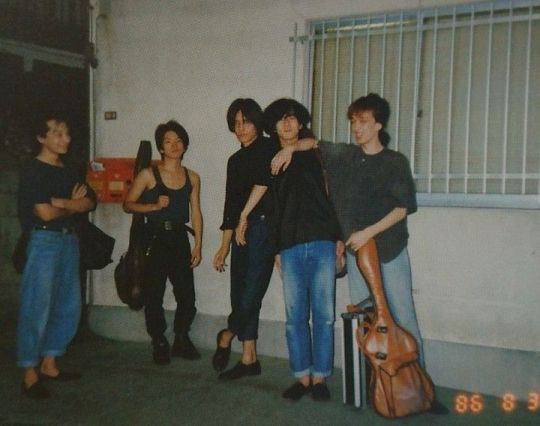
↑ 3 August - 1986
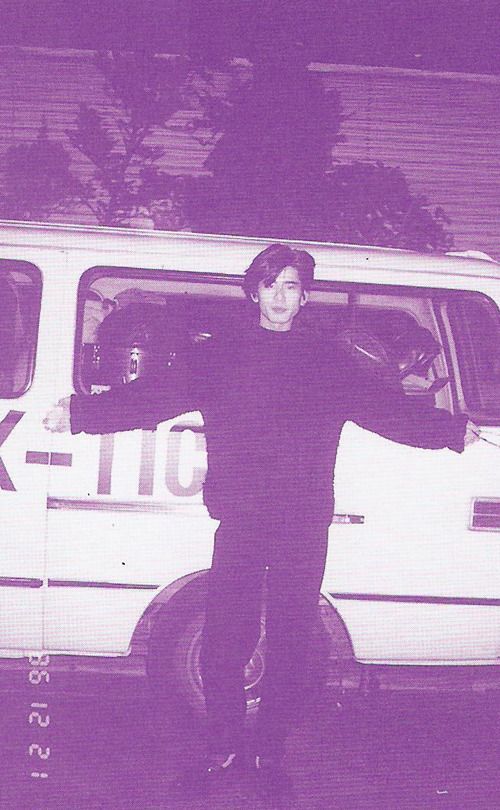
↑ 21 December - 1986 (Hidehiko Hoshino and the Buck-Tick van)
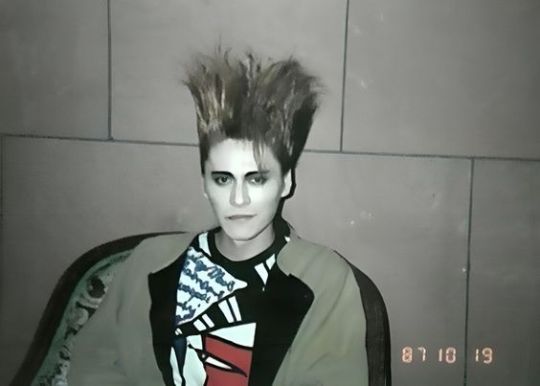
↑ 19 October - 1987 (Sakurai at age 21)

↑ 1988 (Sakurai at age 22)

↑ 2 June - 1988 (Imai and Hoshino)


↑ 20 January - 1989 (Sakurai one on the side)

↑ 28 September - 1991

↑ 3 October - 1993 (Imai and Sakurai)
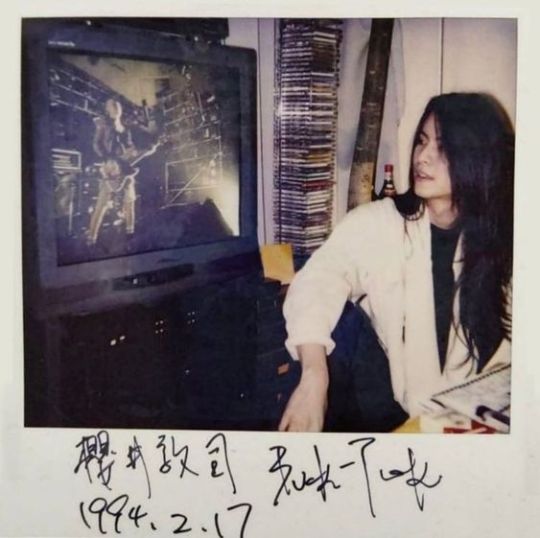
↑ 17 February - 1994 (Sakurai at age 27)

↑ May 1994 (From Ongaku to Hito. Interview with Issay)

↑ 29 March - 1995 (Sakurai at age 29)

↑ 25 July - 1995
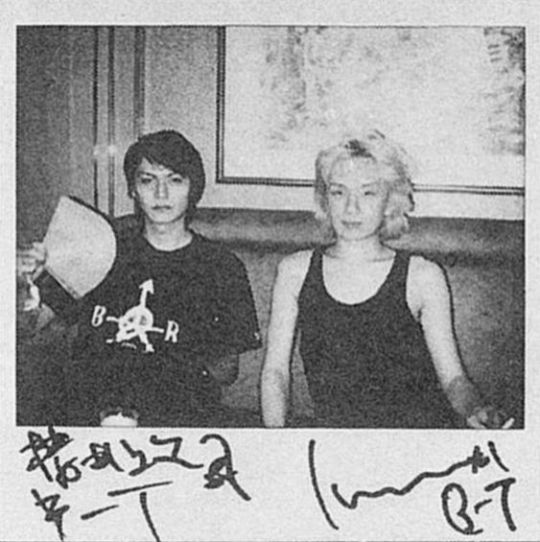
↑ 1996 (Sakurai and Imai. I'm unsure of the date but based on other pictures I found I gave it 96')

↑ July 1996 (From Ongaku to Hito)

↑ 27 September - 1997 (Sakurai)
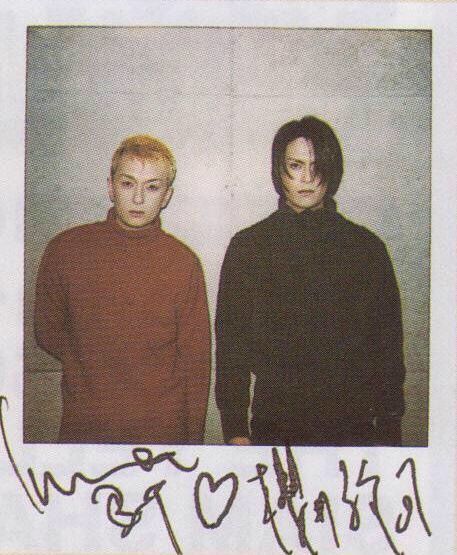
↑ 1997 or 1998 (Imai and Sakurai, unsure about the date)
#buck tick#atsushi sakurai#hidehiko hoshino#hisashi imai#yutaka higuchi#toll yagami#polaroid#櫻井敦司#星野英彦#今井寿#樋口豊#ヤガミトール
285 notes
·
View notes
Text

STREAMER DR - ᯅ



name: Christian Raymond Frye-Fischbach age: 19 birthday: july 11th, 2005 gender: intersex genderqueer pronouns: he/she sexuality: queer
birth place: florida, USA current living place: Los Angeles, California ethnicity: white occupation: streamer / youtuber / singer / advocate / artist / part-time interpreter

APPEARANCE - ᯅ


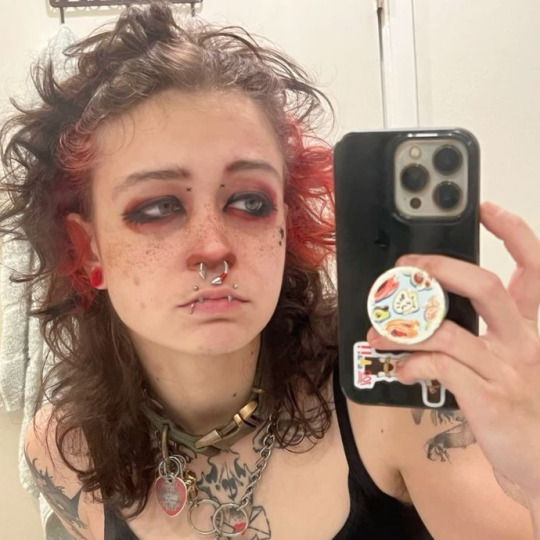
height: 5'10 / 177.8 cm piercings: ear lobe x3, septum piercing, the fang piercings tattoos: a few actually, i'll probably make a seperate post & link it face claim: foxteeth on tt extra: heterochromia one green eye, one blue and brown eye

FAMILY - ᯅ



Dad
name: Mark Fischbach age: 35 birthday: june 28, 1989 gender: male pronouns: he/him sexuality: heteroflexible ?
Mom
name: Amy Nelson (future Fischbach 😏) age: 30 birthday: march 21, 1994 gender: female pronouns: she/her sexuality: straight
Brother Figure
name: Ethan Nestor age: 27 birthday: october 24, 1996 gender: male pronouns: he/him sexuality: bisexual
Best Friend (oomf)
name: Jared Schlatt age: 25 birthday: xxxx xx, 1999 gender: male pronouns: he/him sexuality: pansexual

PETS - ᯅ
my babies my scrumblies my love dovey babs i miss them every single day
Sirius/Padfoot/Void



breed: wolfdog mutt rescue age: 3 birthday: november 3, 2021 gender: male owner: me :) about: he's my service dog!! he's a silly goofy energetic dog that is passionate about his work and incredible at it too! chat calls him Void as a bit but his legal name is Sirius, I call him Padfoot as a nickname so much he responds to all three lol.
[also to be finished] i've been working on this for 5 days now sobs

ONLINE CAREER - ᯅ
[to be finished] mostly cuz im doing a revamp of my script sjfh
obviously I got a bit of a kickstart from mark being my dad, though I never let him talk about my youtube channel or twitch or anything until i got older and had gotten a solid foundation by myself. people only really knew i was his son because i still went by "tugger" which was his nickname for me as i grew up to help keep my identity a bit more secret though i did appear on camera plenty of times
List of Channels and Such

MUSIC CAREER - 𖦹
[to be finished]

HOBBIES - ᯅ



oh dear god... i have too fucking many.. - Arial/Circus Arts - Art (more of a hobby than a job) - Fursuiting - Cosplay - Theatre - Crochet - Painting - hoarding Collecting - Crafting - Learning Languages (i'm a polyglot in most drs) - Being a Foodie

ADVOCACY WORK - ᯅ

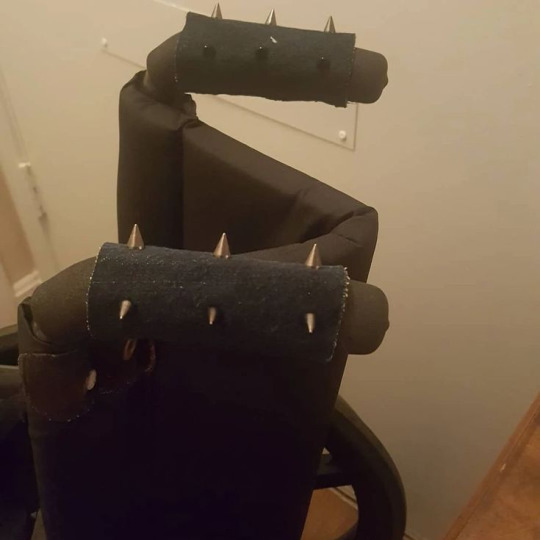

the biggest part of advocacy that I do is be completely honest and document every part of my disabled life. mental and physical, all of it. i have a whole separate channel called [insert name when i think of it lol] that i use to document all of that. I also often raise money through streaming or youtube to donate to charities that help disabled and neurodivergent people. I also often team up with mobility aid or accessibility aid companies to give giveaways to people in need! For a while I was also doing commissions for custom communication cards as well :) though it happens very rarely nowadays. On my main channel I also do interviews occasionally with disabled and neurodivergent people to talk more about their conditions to properly educate people. I also live stream and let chat ask questions (if the interviewee is ok with that) and my mods make sure to filter chat so only appropriate questions are asked! Though I did script the world is a lot more accessible than this one.

S/O - ᯅ



name: Nicholas Armstrong (Sapnap) age: 21 birthday: march 1, 2003 gender: male pronouns: he/him sexuality: bisexual
#reality shifting#reality shifting community#shifting blog#desired reality#shifting#shifting script#shifting to desired reality#shifters#shiftblr#shifting reality#shifting realities#shifting community#shifting to my dr#shifter#scripting#shiftingrealities#streamer dr
25 notes
·
View notes
Text
Anarky Reading Order
This is, based of my research the complete reading list in release order for all Anarly Comics as of October 1st 2024. Release dates were used when available but compromises were made with cover date when necessary. If you see anything that is wrong or needs new additions feel free to let me know!
(Comic Vine was a massive help in this Project!)
1. Detective Comics #608 November 1989
2. Detective Comics #609 December 1989
3. Detective Comics #620 August 1990
4. Batman #456 September 18th 1990
5. Detective Comics #627 March 1991
6. Batman Annual #15 April 18th 1991
7. Robin Annual #1 July 23rd 1992
8. Superman & Batman Magazine #1 Q3 1993
9. Batman: Shadow of the Bat #16
10. September 1993
11. Batman: Shadow of the Bat #17 September 1993
12. Batman: Shadow of the Bat #18 October 1993
13. Green Arrow #89 August 1994
14. Batman: Shadow of the Bat Annual #2 September 1994
15. The Batman Adventures #31 April 1995
16. Batman: Shadow of the Bat #40 May 16th 1995
17. The Batman Chronicles #1 May 30th 1995
18. The Batman Adventures #36 October 1st 1995
19. Batman: Shadow of the Bat #41 June 20th 1996
20. Batman: Shadow of the Bat #50 May 1st 1996
21. Batman: Shadow of the Bat #66 September 1st 1997
22. Batman: Shadow of the Bat #67 October 1st 1997
23. Batman: Shadow of the Bat #73 April 1998
24. DCU Heroes Secret Files February 1999
25. Anarky #1 May 1999
26. Anarky #2 June 1999
27. Anarky #3 July 1999
28. Anarky #4 August 1999
29. Anarky #5 September 1999
30. Anarky #6 October 1999
31. Anarky #7 November 1999
32. Anarky #8 December 1999
33. Sins of Youth: JLA, Jr. May 2000
34. Young Justice: Sins of Youth #1 May 2000
35. Young Justice: Sins of Youth #2 May 2000
36. Green Arrow #51 August 2005
37. Robin #181 December 17th 2008
38. Robin #182 January 21st 2009
39. Robin #183 April 1st 2009
40. Red Robin #3 August 12th 2009
41. Red Robin #13 June 3rd 2010
42. Red Robin #15 August 4th 2010
43. Red Robin #16 September 9th 2010
44. Red Robin #17 November 10th 2010
45. Red Robin #18 December 8th 2010
46. Red Robin #19 January 12th 2011
47. Red Robin #20 February 9th 2011
48. Red Robin #21 March 16th 2011
49. Red Robin #22 April 13th 2011
50. Red Robin #23 May 11th 2011
51. Red Robin #24 June 8th 2011
52. Beware the Batman #1 October 23rd 2013
53. Green Lantern Corps #25 November 13th 2013
54. Detective Comics #38 Janurary 7th 2015
55. Detective Comics #39 February 4th 2015
56. Detective Comics #40 March 4th 2015
57. Detective Comics: Endgame March 11th 2015
58. Detective Comics #957 May 24th 2017
59. Detective Comics #963 August 23rd 2017
60. Detective Comics #964 September 13th 2017
61. Detective Comics #966 October 11th 2017
62. Detective Comics #968 November 22nd 2017
63. Detective Comics #970 December 13th 2017
64. Detective Comics #971 December 27th 2017
65. Detective Comics #972 January 10th 2018
66. Detective Comics #973 January 24th 2018
67. Batman: Prelude to the Wedding: Red Hood vs. Anarky June 20th 2018
68. Harley Quinn #61 May 1st 2019
69. Harley Quinn #62 June 5th 2019
70. The Imfected: The Commissioner December 18th 2019
71. DC Nation Presents DC Future State November 24th 2020
72. Future State: The Next Batman #1 Janurary 5th 2021
73. I Am Batman #1 September 14th 2021
74. I Am Batman #2 October 12th 2021
75. Robins #4 February 15th 2022
76. Detective Comics #1054 February 22nd 2022
77. Batman: Urban Legends #22 December 20th 2022

48 notes
·
View notes
Text
HEADCANON BIRTHDATES AND AGES OF CARMEN SANDIEGO CHARACTERS (FOR MY AU)
MAIN CAST YEAR - 2023-2024 Carmen - 24-25, March 1, 1999 Ivy - 23-24, July 18, 2000 Zack - 22-23, September 27, 2001 Player - 19-20, March 7, 2004 Shadowsan - 48-49, January 10, 1976
MAIN VILLAINS Amaryllis - 19-20, October 5, 2004 Flytrap - 21-22, November 26, 2002 Spinkick - 21-22, December 16, 2002 SIDE VILLAINS (not revealing them y et) ??? - 27-28, November 10, 1996 ??? - 26-27, April 17, 1997 ??? - 28-29, May 8, 1995 ??? - 30-31, April 26, 1993 ??? - 25-26, June 6, 1998
ACME
Julia - 26-27, March 16, 1997 Chase - 44-45, February 4, 1980 Chief/Fraiser - 56-57, February 19, 1967 Zari - 28-29, June 22, 1995 ??? - 43-44, September 2, 1981
VILE FACULTY
Maelstrom - 62-63, December 10, 1961 Bellum - 56-57, November 27, 1967 Cleo - 52-53, May 5, 1971 Coach Brunt - 61-62, March 16, 1962 Roundabout - 60-61, September 26, 1963
OTHER CHARACTERS
Marta Contreras - 46-47 October 15, 1978 Gray/Crackle - 30-31, October 21, 1993 Sheena/Tigress - 29-30, July 16, 1994 Mime Bomb - 28-29, November 2, 1995 Antonio - 31-32, July 23, 1992 Jean Paul - 31-32, February 2, 1992 Paperstar - 26-27, August 6, 1997 Neal - 31-32, November 18, 1992 Dash Haber - 34-35, August 20, 1989 Lady Dokuso - 48-49, August 22, 1976 Cookie Booker - 52-53, December 19, 1971
#carmen sandiego#carmen sandiego 2019#carmen sandiego season 5#csv#cs5#cs carmen#cs ivy#cs zack#cs player#cs shadowsan#cs amaryllis#cs julia#cs devineaux#cs zari#cs chief#cs maelstrom#cs bellum#cs cleo#cs coach brunt#cs roundabout#cs marta#cs crackle#cs tigress#cs mime bomb#cs le chevre#cs jean paul#cs el topo#cs antonio#cs paper star#cs neal the eel
30 notes
·
View notes
Text
Scathed Master List (Javier Pena)
In progress, Rating: Mature

Javier Peña X OFC
“No one who went through it, even the survivors, came out intact.” - Walt Breslin
Summary: Javier and Emily experienced the drug war on different fronts in very different ways. Maybe, they’re what the other needs to heal.
General Warning: trauma, panic attacks, past grooming, past abuse, drug war, canon typical topics. Chapter specific warnings before each chapter.
April 8, 1989
October 22, 1993
October 23, 1993
December 3, 1993
April 8, 1994
May 2, 1994
May 25, 1994
July 16, 1994
August, 1994
Dear Javi, 1994
Goodbye Javi, 1994
Spring 1995
Coming soon
Read on AO3
—
Thank you to Mads (@chaotic-mystery) for making this mood board! I fall more in love with each time I look at it ☺️.
239 notes
·
View notes
Text
Since I am discussing anime academia today, I was reading another paper that was equally frustrating, along a different axis:
“Do female anime fans exist?” The impact of women-exclusionary discourses on rec.arts.anime
This as a premise is a good concept; someone mining the 90's Usenet anime communities for how the fandom saw female fans back then (the article title is quoting one such thread). So of course, the opening line of this article about the anime fandom in the 90's is....sigh....a reference to Donald Trump:
Commenting on the 2016 American presidential elections, multiple news reporters noted that a relationship could be found between Donald Trump supporters and online anime fans
It of course goes on to discuss Gamergate, 8chan, online right-wing radicalization, references to the "Fascist" themes of Attack on Titan, and on and on. The obvious problem with this is that it is irrelevant; the "methodology" section involves this aside about how they pulled this data from Google Archives but Google is an advertising firm and not a replacement for a real archive and we need to Fight The System and buddy my dude that is not germane to your sample size!!! But more importantly, it is backwards. I don't need to explain the argument here in detail; the article is positing a throughline from 90's anime discourse to modern right-wing internet politics through a sort of 'lock-in' effect of built culture norms around misogyny. Which is fine, you can make that argument - but why is all this future stuff in the first section? You haven't really presented the argument yet! This isn't a book, its not the intro chapter - literally 30% of the text of this article is stating a conclusion upfront, justified not through the text itself but citations to other articles about its truth.
This is something media studies pulled from traditional science - traditional science states "established facts" up front that the paper is building on. But that is because - a thousand caveats aside - in chemistry those facts are....facts. They may be wrong facts, but they can, ostensibly, be objective descriptors. This paper cites "anime is still synonymous with far-right ideologies of white and male supremacy, and events of anti-Blackness" like its citing the covalent bond count of carbon. That is not and never will be a fact one can cite, that is an argument; and its not one that is important for understanding this analysis of Usenet groups. This structure is pulled from other sciences, but it flourishes because it lets you pad the citation count of your peers. Its embarrassing how often you can skip the first 1/3rd of a paper in this field - really the worst possible thing to copy from economics (ding!)
This paper also does the insane thing of jumping between citations from 1992 and events in the 2010's like anime culture is continuous between those time periods. Its an extremely bold claim it just does in the background... but lets set that aside.
This hyper-politicization & hyper-theorizing leads to the second issue of extreme under-analysis. This is the actual value-add of this paper:
From this search, I was able to find the discussion threads “How many females read r.a.a.?” (135 messages; opened on July 13, 1993), “Question: Girls on r.a.a?” (23 messages; opened on February 25, 1994), “Female Otakus” (221 messages; opened on June 25, 1994), “Women watching anime” (72 messages; opened on October 4, 1994), and “Female fans - Do they exist?” (61 messages; opened on October 26, 1995). While these discussions may seem like they were spaces for marginalized users to discuss their experiences, they were often started and overwhelmingly occupied by identified male users. In total, I extracted 252 messages from 1992 to 1996 that were relevant to the gendering of anime fandom, and among those, I classified them as 7 kinds of negative networking discursive practices: (e.g. Table 1. Negative networking practices on rec.arts.anime).
252 messages, five threads - later on it will name other threads, so its more than this, but you get it. It has a bunch of data. And from that data, the article quotes...less than half a dozen examples. There are no quantitative metrics, no threads are presented or discussed in detail from this data set. Some other event is discussed in detail, but again it quotes essentially one person once. The provided "Table 1", the only Table, is a list of the author's categorizations of the data; the data itself is not present. Its file format is a CSV, presumably to mock me for clicking it.
There is, from top to bottom, a complete lack of engagement with the data in question. This would fail an intro anthropology seminar; the conclusion is simply presumed from 1% of the sample size while the rest of the messages are left on read. I just don't think there is any value in that, a handful of messages from 1996 divorced from their context and stapled onto modern politics as a wrap-up. What did the people on this Usenet value? How did they think of women collectively? As anime fans, as outsiders, as romantic partners, as friends? What subfactions existed? Questions like those would presumably be the point of this investigation, but they are treated as distractions.
And this article was, in anime academic circles, a pretty well-trumpeted one. I'm not cherry-picking a bad one here, it was the "hot paper" of the month when it came out. Its just that the standards can be so low, its a field that simply lacks rigor. Which doesn't stop a ton of great work from being done btw, that isn't my point at all. My point is that the great work is not selected for; it goes unrewarded, bogged down by academic standards divorced from discovering real insights.
(I do not think the question "why are they misogynist" ever crossed the author's mind. That should be your literal thesis, and its a ghost. Just ugh.)
150 notes
·
View notes
Text
Paul Sorvino

Physique: Husky Build Height: 6’ 3" (1.91 m)
Paul Anthony Sorvino (April 13, 1939 – July 25, 2022) was an American actor who often portrayed authority figures on both the criminal and the law enforcement sides of the law. Sorvino was particularly known for his roles as Lucchese crime family caporegime Paulie Cicero in Martin Scorsese's 1990 gangster film Goodfellas and as NYPD Sergeant Phil Cerreta on the second and third seasons of the TV series Law & Order. Sorvino died on July 25, 2022, aged 83.




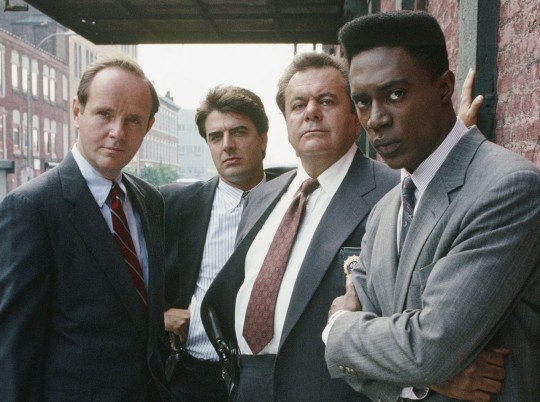
Tall, dark and handsome with an adorable smile, a lovely shape and was deceptively hairy. All that is nice, but what is important is Old Paulie packing a serious pair of nuts that I would love to have dragged all over my face. Also I have to mention that ass of his that I want my dick to take a swan dive into. I'm willing to bet Paul had to have some idea that us chasers love it.




The Brooklyn native was married three times with three children from his first, including Academy Award-winning actor Mira Sorvino. The tough-guy actor was also an accomplished sculptor, a painter, a best-selling author, many, many things, even a poet, an opera singer.

RECOMMENDATIONS: That's Life (2000 TV Series) - Shirtless Harlem Aria (1999) - Open shirt Joe Torre: Curveballs Along the Way (1997) - Open shirt Romeo + Juliet (1996) - Shirtless Parallel Lives (1994) - Rear nudity Very Close Quarters (1984) - Shirtless I Will… I Will… For Now (1976) - Shirtless It Couldn't Happen to a Nicer Guy (1974) - Shirtless A Touch of Class (1973) - Shirtless
127 notes
·
View notes
Text

Shared my Knowcali on Reddit



Shared by Knowcali on Reddit

#jeffbuckley#jeff buckley#above brainwash#san francisco#ephemera#flyer#concert flyer#july 25 1994#25 july 1994#Knowcali#mystery white boy poster#autographed cd#1994
13 notes
·
View notes
Text








Marilyn Monroe’s family.
Gladys Pearl Monroe was Marilyn’s mother. At age 15, Gladys had married John Newton Baker, an abusive man nine years her senior. They had two children together, Robert and Berniece.
Gladys’ second marriage occurred in 1924 when she married Martin Edward Mortensen. In 1926 she gave birth to Norma Jeane, (Marilyn)
Gladys told Marilyn that her father was one of her co-workers (and her superior) at RKO Studios—a man named Charles Stanley Gifford.
Marilyn sought out Charles Stanley Gifford and told him who she was, only for him to respond: “I’m married, and I have a family. I don’t have anything to say to you. Call my lawyer”
In 2022, a scientists performed a DNA test on a strand of Marilyn’s hair and a cheek swab from one of Charles’ great-grandchildren, which confirmed that Charles was Marilyn’s father.
Marilyn also had two other half-siblings from Gifford’s marriage with his first wife, a sister, Doris Elizabeth (1920–1933), and a brother, Charles Stanley Jr. (1922–2015).
Gladys, who had long suffered from mental illness, lived most of her life from 1934 until 1967 in psychiatric facilities.
She went on to live with her daughter Berniece, and moved into a retirement home in Gainesville, Florida, where she died on March 11, 1984
Marilyn’s father, Charles Stanley Gifford (1898-1965)
Marilyn’s mother, Gladys Pearl Monroe (May 27, 1902 – March 11, 1984)
Marilyn’s half brother, Robert Kermitt Baker (January 16, 1918. August 16, 1933) He died of kidney failure as a result of the tuberculosis
Marilyn’s half sister, Berniece Inez Gladys Miracle (July 30, 1919 – May 25, 2014)
Marilyn’s niece, Mona Rae Miracle, was born on July 18, 1939.
Photo 1- Berniece at 75 years old, 1994
Photo 2- Marilyn as a baby
Photo 3- Gladys and Norma Jeane
Photo 4- Gladys
Photo 5- Marilyn’s half brother Robert.
Photo 6- Berniece, Gladys, Marilyn
Photo 7- Berniece, Marilyn with her niece Mona and Gladys
Photo 8- Stanley, Marilyn’s father
Photo 9- Stanley Jr. Marilyn’s half brother, her father’s son.
Photo 10- Gladys
39 notes
·
View notes
Text
Previews for today's Grill the Grid!
Solid job from Lewis (nailed Lestappen, awww George is a wittle baby to him!):

Nico, we need to talk... 😨

Error.exe:


+Cheat sheet for today: 😁
Piastri - April 2001 (22 yr)
Sargeant - Dec 2000 (22 yr)
Tsunoda - May 2000 (23 yr)
Norris - Nov 1999 (23 yr)
Zhou - May 1999 (24 yr)
Stroll - Oct 1998 (24 yr)
Russell - Feb 1998 (25 yr)
Leclerc - Oct 1997 (25 yr)
Verstappen - Sept 1997 (25 yr)
Ocon - Sept 1996 (26 yr)
Albon - March 1996 (27 yr)
Gasly - Feb 1996 (27)
De Vries : Feb 1995 (28 yr)
Sainz - Sept 1994 (28 yr)
Magnussen - Oct 1992 (30 yr)
Perez - Jan 1990 (33 yr)
Bottas - Aug 1989 (33 yr)
Ricciardo - July 1989 (34 yr)
Hulkenberg - Aug 1987 (35 yr)
Hamilton - Jan 1985 (38 yr)
Alonso - July 1981 (42 yr)

#f1#grill the grid#lewis hamilton#nico hulkenberg#lance stroll#checo perez#lestappen#youngest to oldest#*#lewis is rightfully proud of himself!
222 notes
·
View notes
Text

BEN HARDY (1921-1994)
Custom motorcycle builder Ben Hardy was born Benjamin F. Hardy on July 25, 1921, in Los Angeles, California. However, historical data regarding his family, upbringing, and obituary have yet to be recovered from the annals of time.
After World War II, as the United States experienced a slight depression with high unemployment, and California had an unemployment rate of 8.8% compared to a national average of 3.9% in 1946, Hardy established Hardy’s Motorcycle Service shop in South Central Los Angeles, located at 1168 E. Florence Avenue. He built two ‘Billy’ bikes and three’ Captain Americas,’ made at that time from a 20-year-old, heavily customized Harley-Davidson Panhead, with the assistance of another Black motorcycle builder, Cliff Vaughn, the most famous motorcycles ever made.
Los Angeles, California, was a city divided and segregated along racial lines, and it did not welcome Hardy and his creation into the mainstream motorcycle world. However, Hardy and Black motorcyclists continued riding the typical ‘Billy’ bike in their limited circle. In the 1950s, during the high point of Jim Crow, some viewed the camaraderie of riding a customized Harley chopper creatively in a group as a revolutionary act.
In 1969, Hardy’s chopper was showcased in the iconic 1969 motorcycle film Easy Rider, in which two bikers travel through the Southwest and South of the U.S. with lots of money from a cocaine deal. His bikes were duplicated for this movie if mechanical failure or wreckage during film shortage were anticipated. The film Easy Rider brought in more than $60 million; however, Hardy was inadequately recognized and did not benefit financially from the movie’s success.
In 2014, 20 years after the death of Hardy, the Captain America bike sold for $1.35 million. Four years later, in 2018, Hardy’s work was featured in the “Black Chrome” at the California African American Museum. This exhibit, sponsored by the Automobile Club of Southern California, the most prominent member of the AAA Federation of Motor Clubs, was about the historical development of African American motorcycle culture. A replica of Hardy’s Captain America bike is housed in one of Germany’s largest motorcycle collections at the German Two-Wheeler and NSU Museum in northern Baden-Württemberg.
Ben Hardy died in 1994. He was 74.
#Ben Hardy#motocycle#builder#los angeles#california#read about him#amazing#talented#gifted#knowledge is power#african american history#black history
34 notes
·
View notes
Text
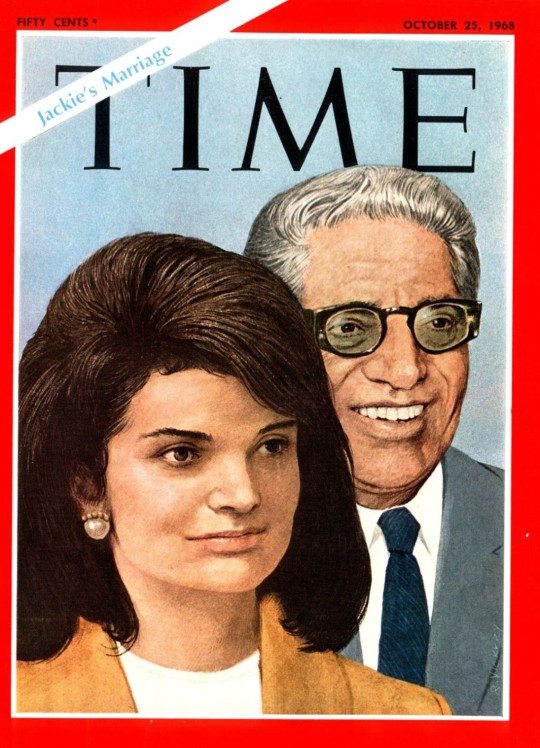
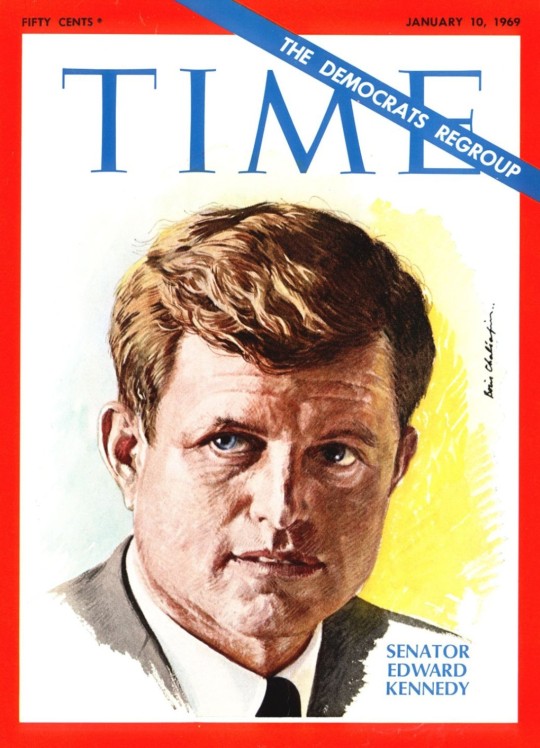
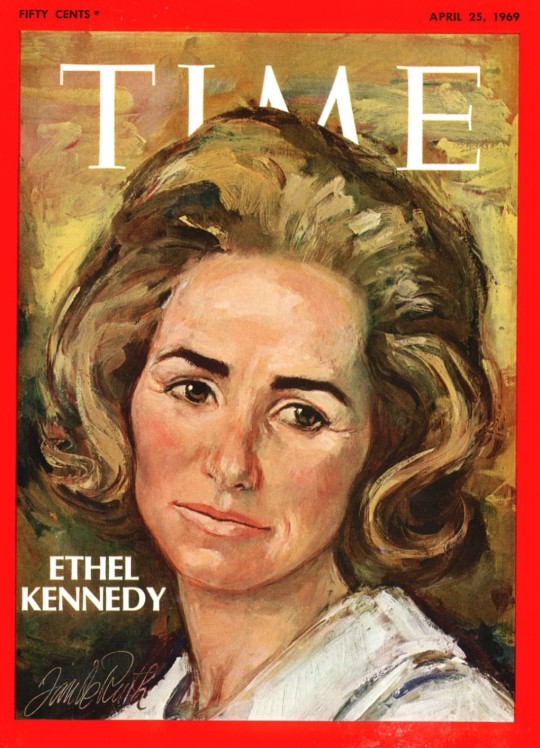
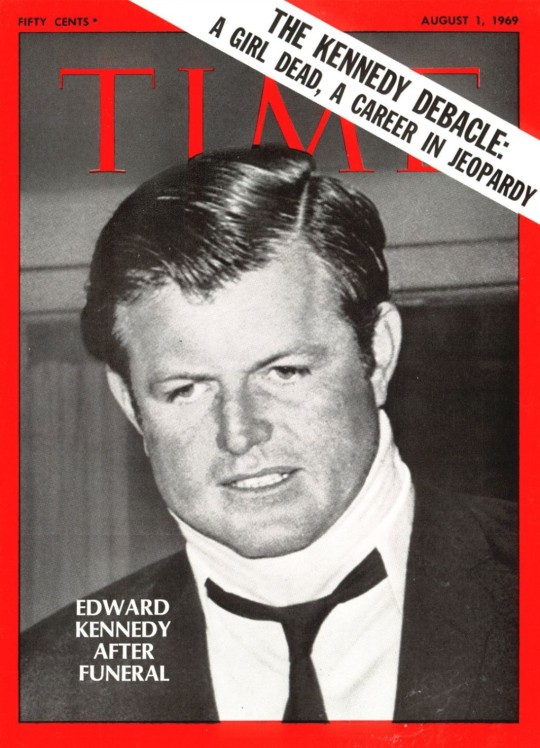
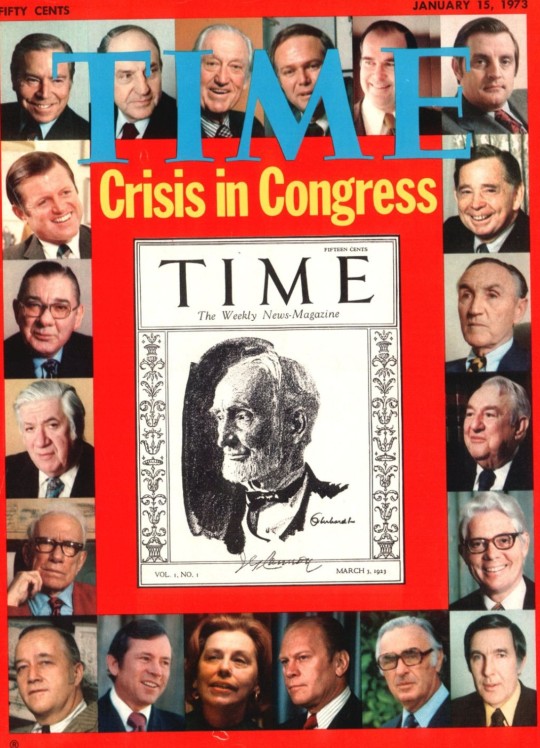
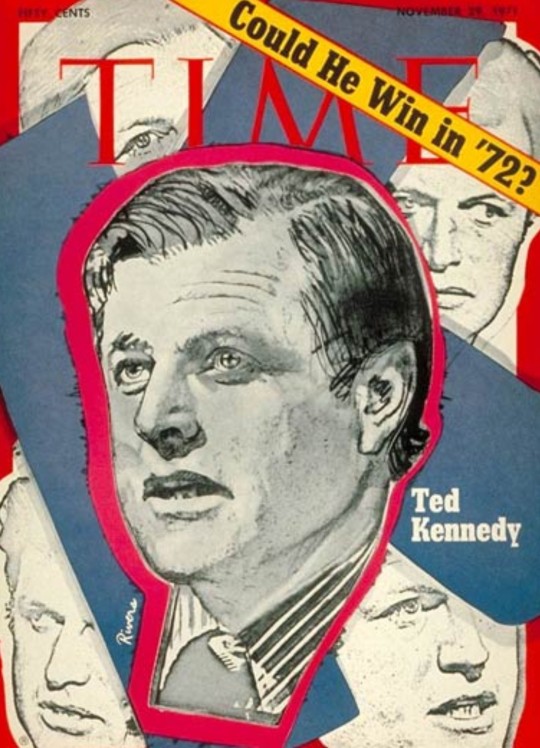
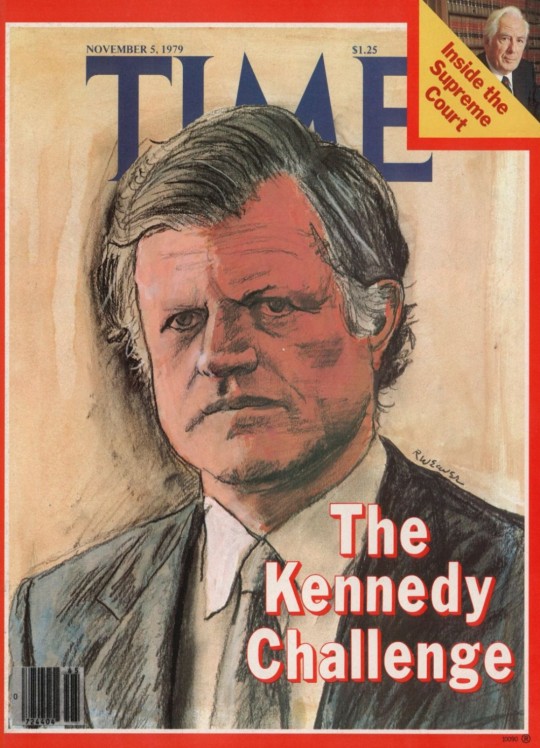

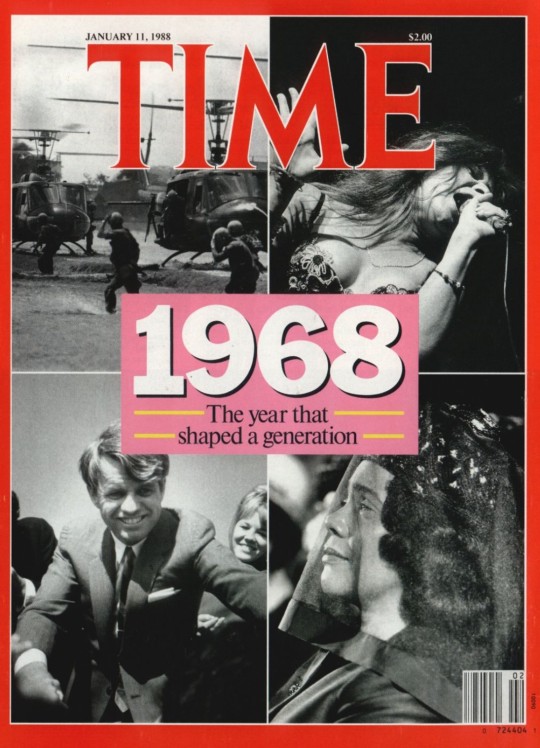
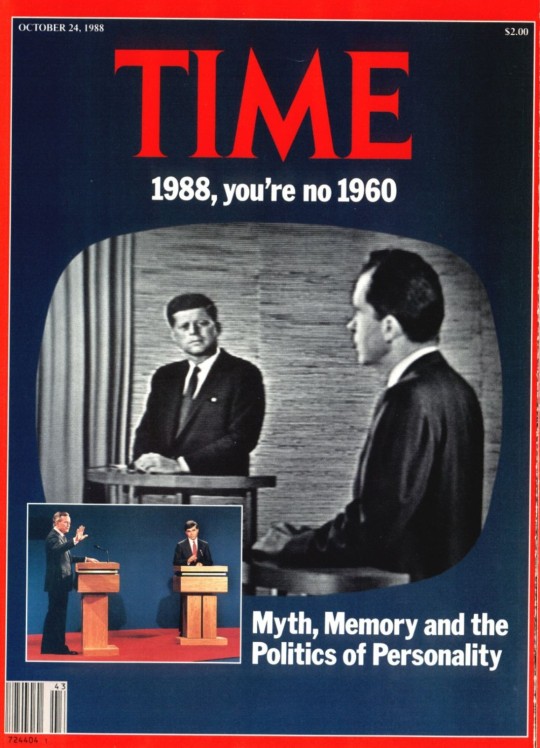

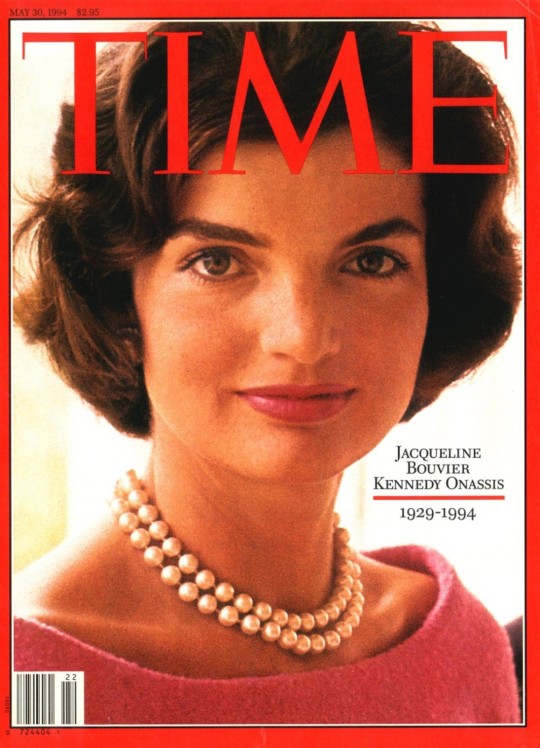
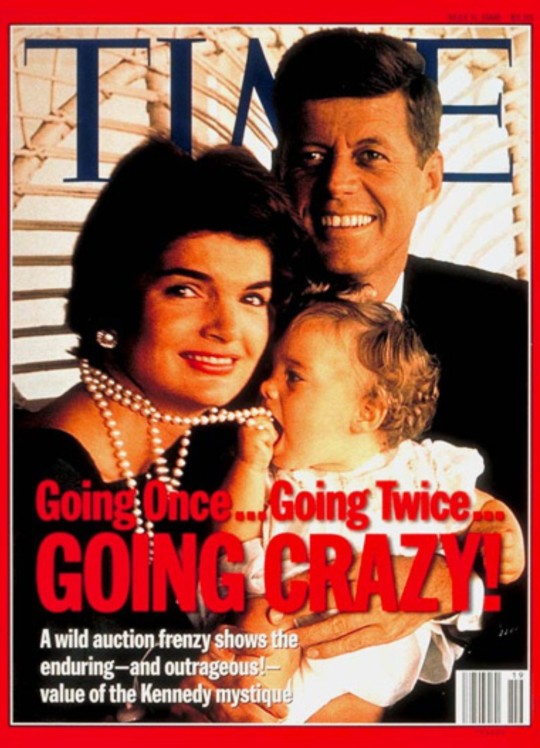
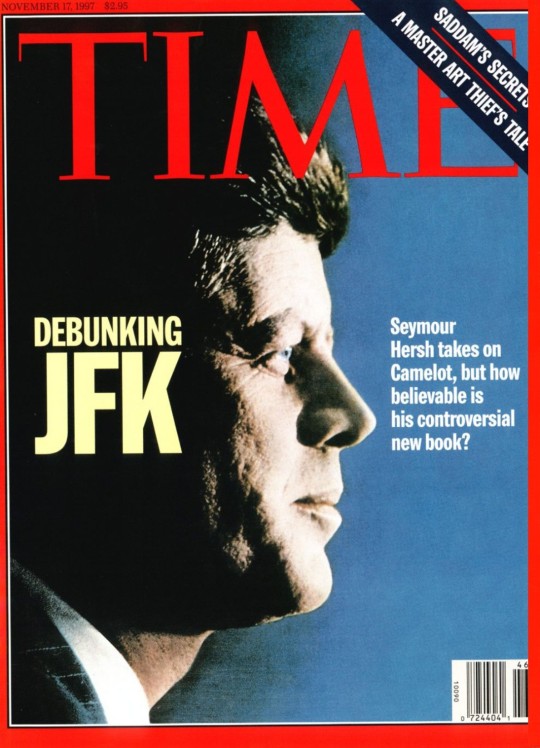
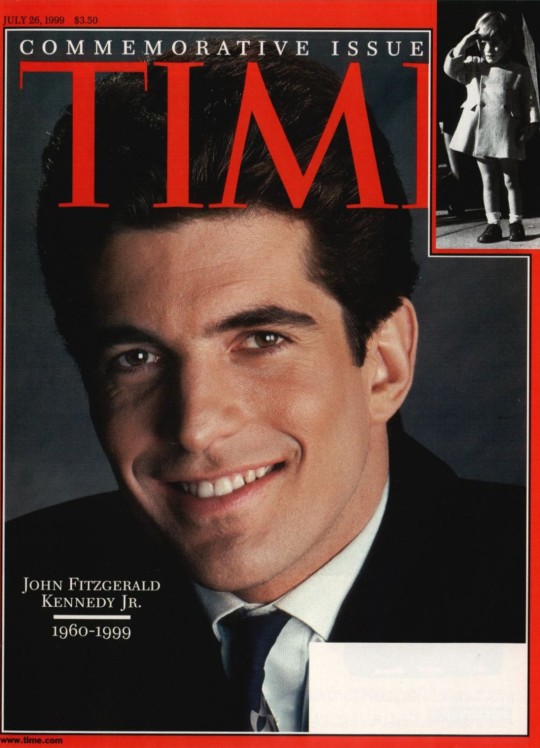

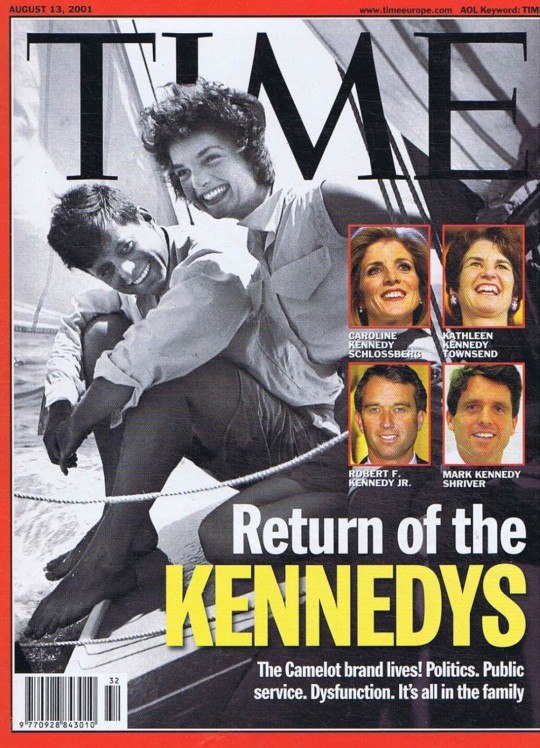
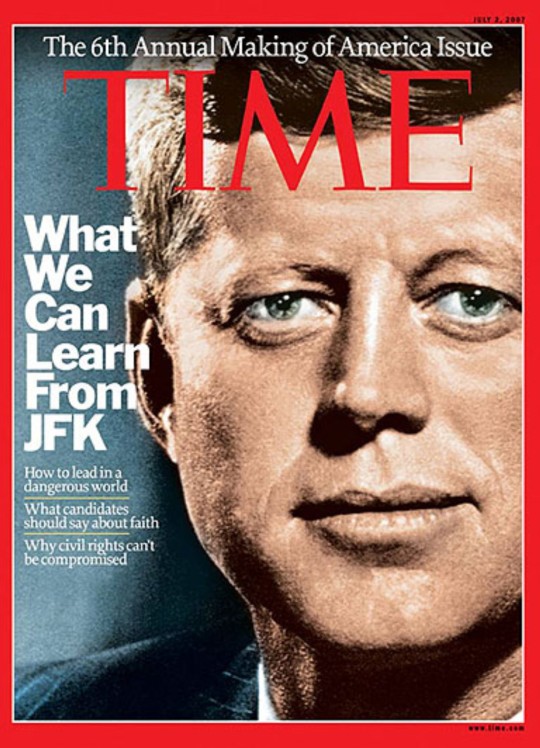
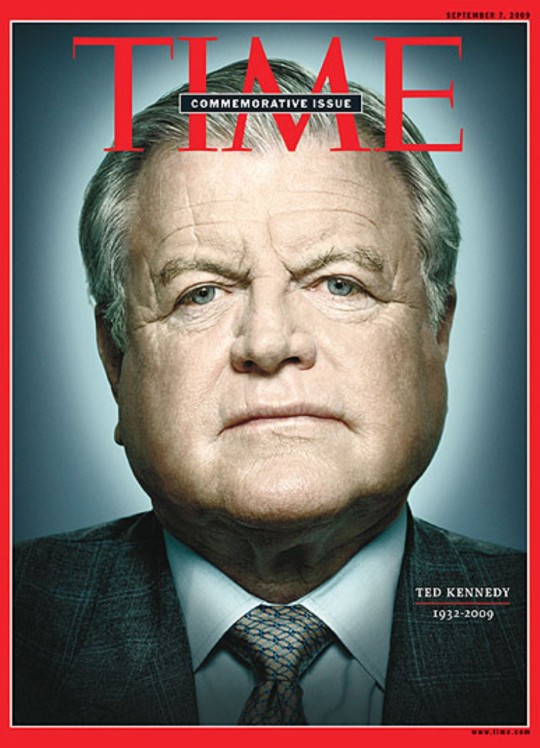
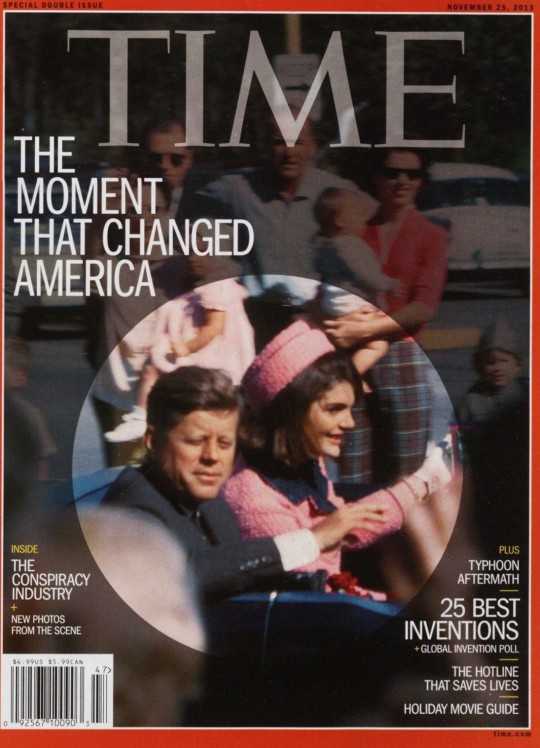

The Kennedys' on TIME Magazine (Part 2/2)
Jackie Kennedy (with Aristotle Onassis), October 25, 1968.
Edward M. Kennedy, January 10, 1969.
Ethel Kennedy, April 25, 1969.
Edward M. Kennedy, August 1, 1969.
Edward M. Kennedy (with members of Congress), January 15, 1973.
Edward M. Kennedy, November 29, 1971.
Edward M. Kennedy, November 5, 1979.
John F. Kennedy, November 14, 1983.
Robert F. Kennedy, January 11, 1988,
John F. Kennedy, October 24, 1988.
John F. Kennedy & Jackie Kennedy (Assassination), November 28, 1988.
Jackie Kennedy Onassis, May 30, 1994.
John F. Kennedy, Jackie Kennedy and Caroline Kennedy, May 6, 1996.
John F. Kennedy, November 17, 1997.
John F. Kennedy Jr., July 26, 1999.
John F. Kennedy Jr., August 2, 1999.
John F. Kennedy, Jackie Kennedy, Caroline Kennedy Schlossberg, Kathleen Kennedy Townsend, Robert F. Kennedy Jr. and Mark Kennedy Shriver, August 13, 2001.
John F. Kennedy, July 2, 2007.
Edward M. Kennedy, September 7, 2009.
John F. Kennedy & Jackie Kennedy, November 25, 2013.
Jacqueline Kennedy, March 16-23 2020.
#on the cover#time magazine#the kennedys#jackie kennedy#edward m. kennedy#ted kennedy#ethel kennedy#john f. kennedy#robert f. kennedy#john f. kennedy jr.#caroline kennedy#1960s#1970s#1980s#1990s#2000s#2010s
38 notes
·
View notes